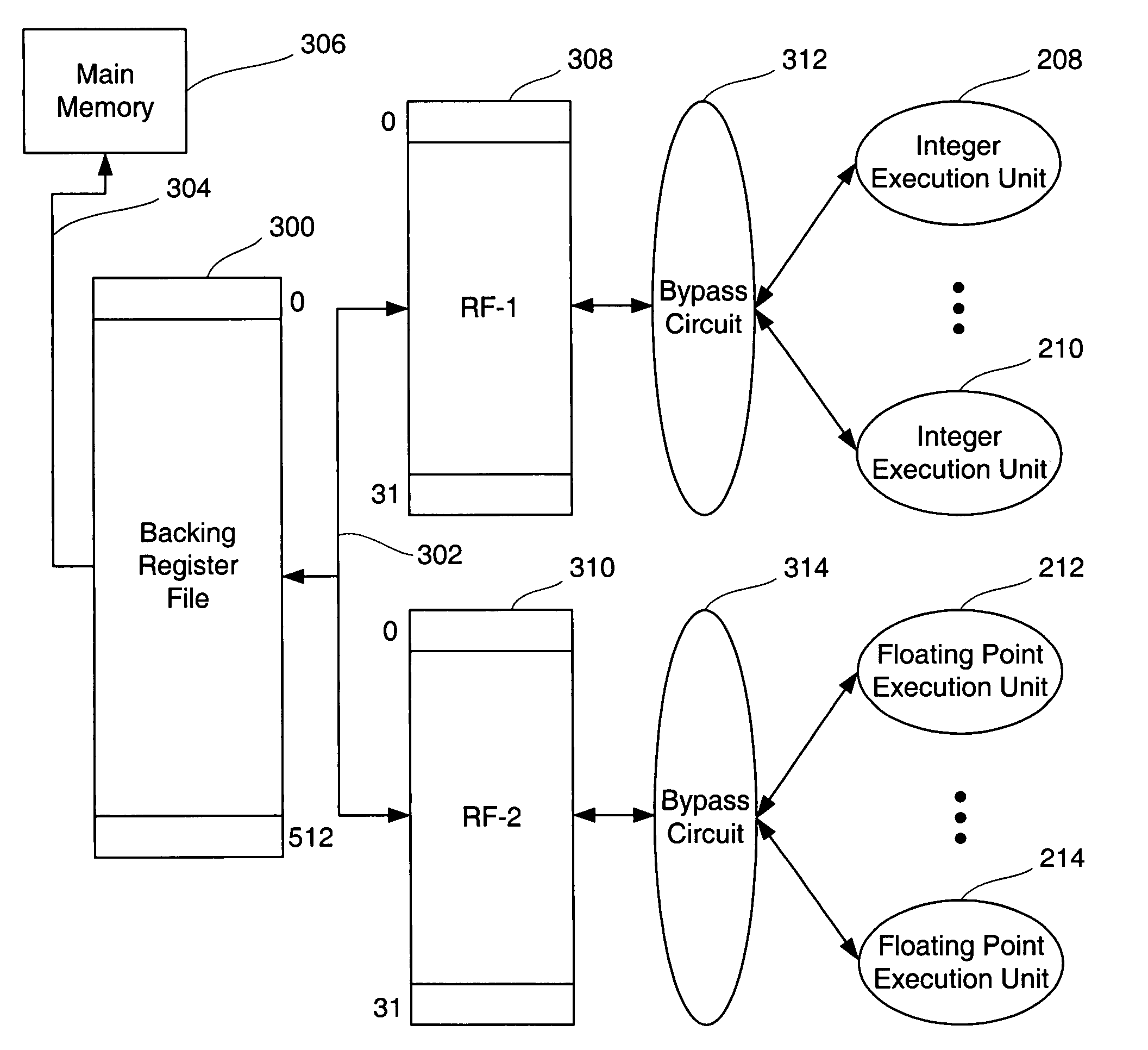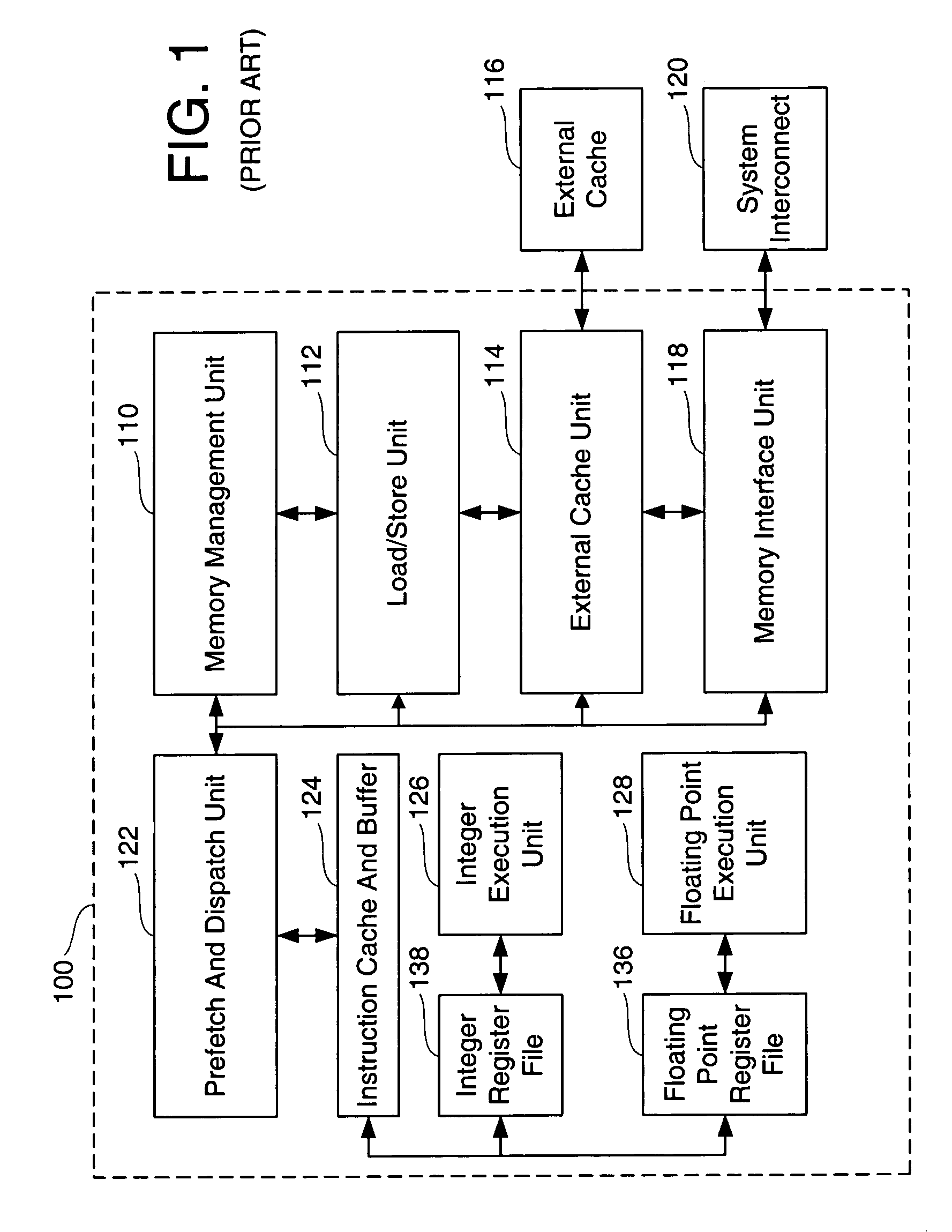Backing Register File for processors
a register file and processor technology, applied in the field of processor architecture, can solve the problems of system performance, circuitry needed to do this for more than one execution unit, and the bottleneck of the size of the register file is the number of ports, so as to increase the throughput of the connected execution uni
- Summary
- Abstract
- Description
- Claims
- Application Information
AI Technical Summary
Benefits of technology
Problems solved by technology
Method used
Image
Examples
Embodiment Construction
[0027]A person of ordinary skill in the art will realize that the following description of the present invention is illustrative only and not in any way limiting. Other embodiments of the invention will readily suggest themselves to such skilled persons having the benefit of this disclosure.
[0028]When viewing the figures, it is intended that similar designations used in this disclosure are intended to designate substantially similar matter.
[0029]Referring now to FIG. 3, Register Files 308 and 310, and Bypass Circuits 312 and 314 are shown. They perform similar functions as Register Files 200 and 202, and Bypass Circuits 204 and 206. However, due to the extra connections of Backing Register File 300 the design and implementation will need to be different than the prior art. Integer Execution Units 208 and 210 are shown, potentially having a number of addition integer execution units between them, and Floating Point Execution Units 212 and 214 are also shown and also may have a number...
PUM
 Login to View More
Login to View More Abstract
Description
Claims
Application Information
 Login to View More
Login to View More - R&D
- Intellectual Property
- Life Sciences
- Materials
- Tech Scout
- Unparalleled Data Quality
- Higher Quality Content
- 60% Fewer Hallucinations
Browse by: Latest US Patents, China's latest patents, Technical Efficacy Thesaurus, Application Domain, Technology Topic, Popular Technical Reports.
© 2025 PatSnap. All rights reserved.Legal|Privacy policy|Modern Slavery Act Transparency Statement|Sitemap|About US| Contact US: help@patsnap.com



